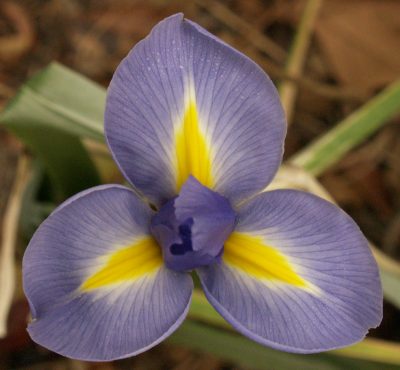Bulb List

Fall is when we plant the stunning spring daffodils, tulips, and Dutch iris.Wait to plant until night temperatures are under 50? degrees for several weeks. Mid-November is a good target, but get them planted by the end of December.
You do want to get them at nurseries or order online in mid-September to mid-October, because they can sell out! Until planting day, keep them cool and dry in the house.
Some bulbs require a period of cold weather to trigger the bloom cycle. If the bulbs are planted too late they may be shorter than usual. Some like hyacinth and tulips should be refrigerated for 6 to 8 weeks before planting, so you’ll want to get those as soon as nurseries have them in stock in September.
Narcissus that are forced for indoor usewill benefit from at least 3 weeks of refrigeration. Keep apples away from the bulbs in the refrigerator.
Some bulbs like crocus require more cold weather than we can expect and will have disappointing blooms most years.
Look for large bulbs that are firm, with no sign of mildew or mold. Larger bulbs will produce larger and more abundant blooms.
Most bulbs require full sun, but early blooming bulbs may be planted under deciduous trees like pecans, which are slow to leaf out.
Plant in well-drained soil.Bulbs in soil that stays moist when they are dormant can lead to rot. Naturalizing bulbs, that return year after year, can rot if sprinkler systems deliver too much water in soil that doesn’t dry out.
Amend the soil with compost and add bulb or flower fertilizer.
Plant pointed side up! Use a bulb planter, dibber or a trowel to plant at the proper depth.Southern gardeners should adjust the depth of planting bulbs to twice the width as opposed to the general recommendation of three times the width of the bulb.
For the best display, plant in groups of five or more.
Firm the soil around the bulb and water well to settle the soil. Fertilize once or twice during the spring.
Mark the location with the date and variety name so that you don’t plant something else there and damage the bulbs. This also helps you remember which ones you put where!
It is important to allow the foliage to die back naturally and not cut it back until it is yellowing. The yellowing leaves are feeding the bulbs for next year’s blooms. Interplant bulbs with other perennials like daylilies to hide the unsightly foliage.
Tulips (other than naturalizing Cluisianas) will only bloom one year, so can be discarded after the blooms fade.
After several years, naturalizing bulbs will become crowded and will bloom less. Dig up the bulbs after the foliage has faded and divide the clumps. Prepare the soil and replant bulbs and share the extras with friends or plant in other areas.
Some of the most dependable bulbs for Central Texas
- Daffodils Dutch Master, Unsurpassable, Ice Follies
- Narcissus Ziva
- Dutch iris
- Luecojum or Snowbells
- Ipheon
- Tulips consider an annual. Most will not rebloom except for Clusiana types.
- Grape Hyacinth, which can naturalize
- Other hyacinths may rebloom for a few years, but the fragrance is worth the shorter life span
categories:
tags:
related:
appeared on episodes:








 Trisha Shirey
Trisha Shirey